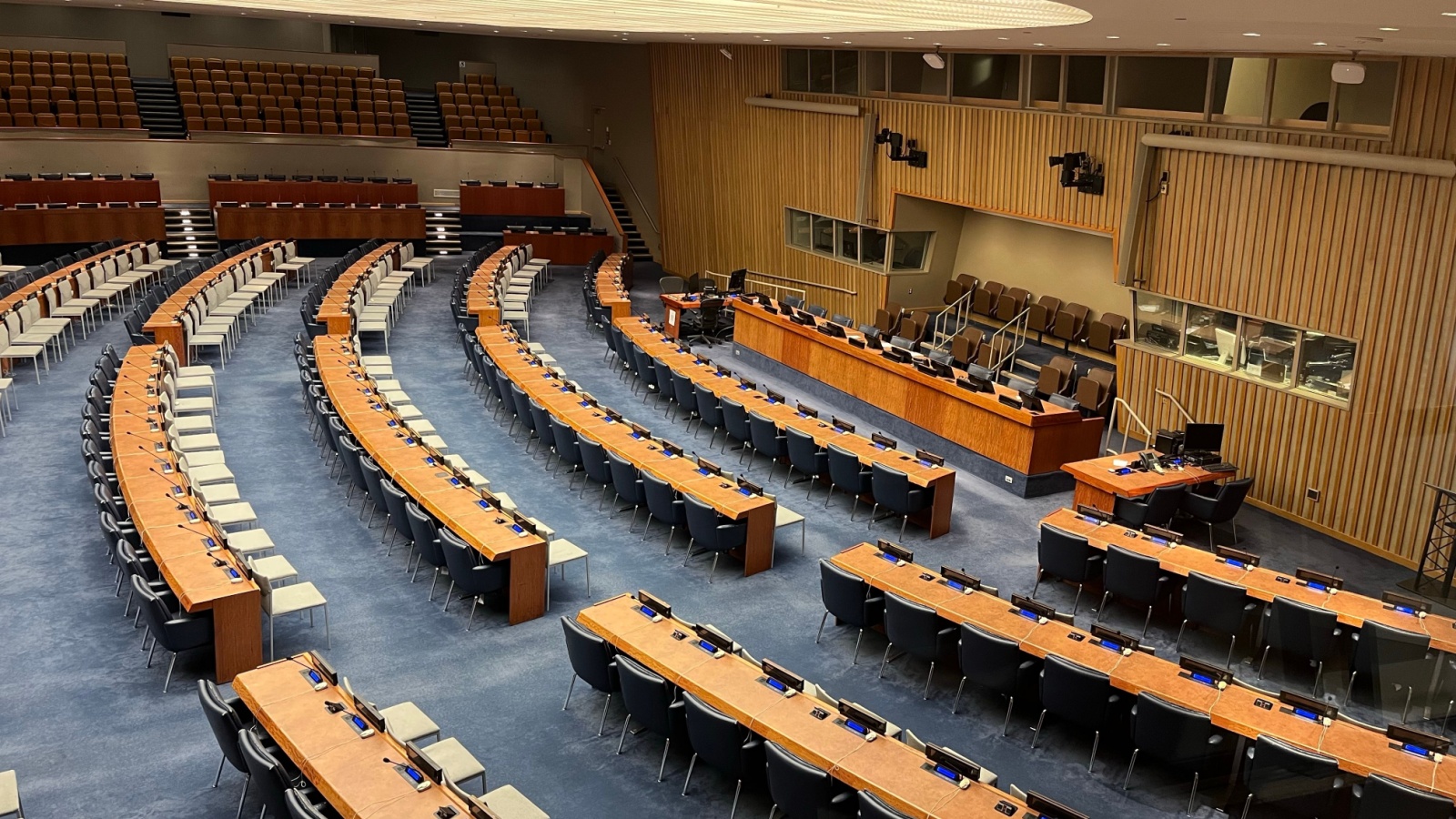In recent years, Canada has been quietly making policy moves that reach far beyond its borders. These aren’t just national reforms; they’re global influences reshaping how the world handles trade, innovation, equality, and the environment. While other countries chase headlines, Canada has opted for substance, building frameworks that others now follow. Here are 22 Canadian decisions changing the world right now.
Feminist International Assistance Policy

The Feminist International Assistance Policy transformed Canada’s foreign aid by prioritizing gender equality across every initiative. Introduced in 2017, it directs the majority of bilateral aid toward empowering women and promoting inclusive development. This decision influenced global donor strategies, pushing other nations to adopt feminist funding frameworks. It also redefined what “effective aid” means, connecting women’s participation directly to stronger communities and economies. Beyond development, the policy reshaped diplomatic priorities, ensuring gender equity became central to Canada’s global identity. Many multilateral organizations now cite it as a model for integrating equality into mainstream international cooperation.
Comprehensive and Progressive Agreement for Trans-Pacific Partnership

Joining the CPTPP opened access to diverse Asia-Pacific markets while embedding labour and environmental standards into trade. The agreement proved that trade liberalization and progressive values can coexist. By supporting fair competition and sustainability, it positioned Canada as a reliable partner amid shifting global alliances. This decision also diversified export routes beyond North America, reducing dependence on U.S. markets. Countries considering trade reforms studied Canada’s balance between openness and protection. The CPTPP remains an example of modern trade design, influencing other regional deals to integrate rights, climate safeguards, and corporate accountability into economic cooperation.
Global Plastics Treaty Leadership

By supporting a legally binding global treaty to end plastic pollution, Canada demonstrated leadership in circular economy policy. It aligned domestic bans on single-use plastics with global objectives to reduce waste and redesign packaging systems. The decision encouraged industries to invest in recycling infrastructure and greener materials. Internationally, it built momentum for coordinated standards on production, labeling, and disposal. The move also inspired developing nations to consider lifecycle-based waste strategies rather than isolated cleanup efforts. Canada’s diplomatic push proved that environmental action can be compatible with economic opportunity, influencing negotiations shaping future global trade norms.
Global Carbon Pricing Challenge

Launching the Global Carbon Pricing Challenge positioned Canada as a global advocate for market-based climate solutions. The initiative brought together countries to implement or strengthen carbon pricing mechanisms, promoting accountability through measurable emissions costs. By encouraging consistency across jurisdictions, Canada helped standardize climate action frameworks that appeal to both governments and investors. Domestically, it reinforced commitments to cleaner industries. Internationally, it spurred dialogue on equitable climate finance and adaptation. This decision changed the conversation from symbolic targets to tangible economic incentives, making carbon pricing a mainstream policy tool supported by over seventy participating nations.
Canadian Innovation Corporation Creation

Establishing the Canadian Innovation Corporation signaled a major shift toward outcome-driven research investment. Designed to connect private firms with advanced R&D, the agency focuses on commercialization rather than isolated experimentation. Its mandate encourages global competitiveness, ensuring Canadian ideas become globally marketable products. The decision redefined innovation policy by emphasizing measurable results, not just funding volume. It also attracted foreign partnerships and cross-border collaborations in clean technology and artificial intelligence. International observers view the model as an adaptable blueprint for mid-sized economies seeking to build innovation ecosystems that convert intellectual potential into tangible industrial strength.
Ocean Plastics Charter Commitment

Canada’s adoption of the Ocean Plastics Charter committed it to reducing marine waste through innovation, recycling, and product redesign. The decision united government, industry, and NGOs under shared targets for waste prevention and recovery. It positioned Canada as a bridge between developed and developing nations in ocean governance. The Charter inspired multinational corporations to adopt voluntary reduction goals and improve transparency in plastic sourcing. It also reinforced collaboration between coastal countries seeking sustainable fisheries and cleaner trade routes. The Charter now serves as a key reference in United Nations environmental policy frameworks addressing marine ecosystems.
National Productivity and Innovation Strategy

Recognizing gaps in competitiveness, Canada launched a national framework focused on productivity, innovation, and digital modernization. The decision addressed lagging performance by supporting industrial R&D, retraining programs, and technology adoption. It also emphasized collaboration between universities and the private sector to accelerate applied science. Internationally, it showcased how advanced economies can balance inclusivity with high-tech competitiveness. The framework influenced other mid-economy nations exploring similar challenges. By reframing productivity as innovation rather than output, the strategy modernized economic planning and strengthened Canada’s global reputation as a hub for efficient, sustainable, and knowledge-driven industry development.
Reforming Foreign Investment Screening

Adjusting the Investment Canada Act allowed for better protection of national security while maintaining openness to global capital. The reform clarified procedures for foreign takeovers and technology transfers, ensuring transparency in approval decisions. This policy balanced investor confidence with strategic oversight in critical sectors like AI, energy, and telecommunications. The global impact was significant: it provided a model for other nations grappling with similar challenges. Canada’s decision helped redefine responsible foreign investment governance, showing that economic openness can coexist with prudent safeguards when transparency and accountability are prioritized in legislative design.
Strengthening Global Affairs Mandate

Reaffirming the mission of Global Affairs Canada modernized the country’s approach to diplomacy. The decision clarified responsibilities across trade, aid, and international security, improving coordination among missions abroad. It also invested in digital diplomacy, crisis response, and strategic communications to handle evolving geopolitical tensions. This modernization enhanced Canada’s reputation as a consistent partner in multilateral forums. Other nations took note of its integrated model, which merges development, trade, and peacebuilding under one institutional framework. The result was more coherent representation in global negotiations and stronger alignment between domestic priorities and international engagement.
Innovation, Science and Economic Development Renewal

Refreshing Innovation, Science and Economic Development Canada’s mandate emphasized collaboration between government, academia, and private firms. The decision streamlined innovation programs and funding tools, making research commercialization more accessible. It improved coordination across regions, ensuring every province contributed to national growth targets. Internationally, this policy drew attention for integrating social inclusivity with economic efficiency. It also encouraged cross-border partnerships in quantum computing, aerospace, and green manufacturing. By transforming innovation into an economic growth strategy, the reform proved that scientific advancement can drive equitable prosperity and elevate Canada’s influence in global technology leadership.
Circular Economy Plastics Strategy

Adopting a national circular economy framework on plastics made Canada a global pioneer in lifecycle-based regulation. The policy covers design, manufacturing, use, and end-of-life recycling. By requiring minimum recycled content and product redesign, it pushed industries toward sustainable production. Internationally, this approach inspired several countries to develop similar lifecycle regulations. It aligned economic incentives with environmental outcomes and reduced landfill dependence. The strategy also encouraged international companies operating in Canada to upgrade sustainability standards. Overall, it proved that waste management could evolve into a profitable innovation sector rather than a reactive environmental burden.
Expanding Global Trade Agreements

Expanding free-trade agreements across regions diversified Canada’s economic partnerships and reduced overreliance on traditional markets. The decision involved negotiating agreements emphasizing fair competition, labor rights, and sustainable production. It strengthened relationships with countries in Europe, Asia, and Latin America. The expanded trade portfolio enhanced global access for Canadian businesses while creating new opportunities for emerging economies to engage responsibly. These deals demonstrated how modern trade agreements can support values beyond profit. The outcome was a globally interconnected framework where environmental, human-rights, and innovation clauses coexist alongside traditional economic liberalization measures.
Pan-Canadian Framework on Clean Growth

The Pan-Canadian Framework integrated carbon pricing, clean technology funding, and climate adaptation measures under one national plan. The decision provided a consistent model for balancing emissions reduction with industrial competitiveness. It proved that coordinated policy could bridge provincial differences while maintaining national accountability. Internationally, it influenced climate strategies in Europe and Latin America. The framework’s measurable targets built investor confidence in clean energy projects. It became a reference for governments seeking inclusive climate policies that do not sacrifice growth. The plan’s mix of regulation, innovation, and cooperation redefined sustainable policy design globally.
Results-Driven Innovation Policy

Canada’s decision to focus on results rather than input spending changed how innovation success is measured. Instead of emphasizing the number of projects funded, the framework tracks commercial outcomes and global competitiveness. This results-based model influenced research funding in other OECD countries. It fostered accountability among public institutions while encouraging risk-taking in private R&D. The emphasis on measurable progress also attracted international venture capital to Canadian startups. By promoting performance metrics over bureaucratic process, the policy turned innovation into a national export, showing that effective measurement can drive both credibility and long-term growth.
Innovation in Development Assistance

Integrating innovation into global development assistance helped modernize Canada’s foreign aid approach. The decision emphasized funding experimental pilot programs, digital platforms, and scalable local solutions. It encouraged NGOs and startups to collaborate in addressing poverty, health, and climate challenges. The focus shifted from one-size-fits-all aid to data-driven, evidence-based interventions. Other donor nations soon adopted similar models inspired by Canada’s approach. The policy strengthened ties between humanitarian and technological communities, ensuring aid dollars achieved measurable outcomes. This combination of creativity and accountability became an international example of 21st-century development effectiveness.
Global Human Dignity Agenda

Centering international aid on human dignity and inclusion reinforced Canada’s moral leadership in global development. The decision prioritized education, healthcare access, and protection for vulnerable populations. It also required gender-sensitive and rights-based evaluation in every funded project. By doing so, Canada encouraged other nations to measure aid success not just by GDP growth but by improvements in quality of life. The focus on dignity helped bridge policy gaps between economic and humanitarian aid. This people-centered approach influenced United Nations frameworks and reshaped donor accountability standards across international cooperation networks.
Strategic Sectoral Reinvestment

Reassessing national innovation priorities led Canada to focus investments on renewable energy, digital transformation, and agri-tech. This decision aligned domestic strengths with global demand for sustainable technologies. It also balanced regional development by supporting provincial innovation hubs. Internationally, it attracted partnerships from European and Asian firms seeking reliable collaborators in clean industry growth. The focus on sectoral reinvestment allowed Canada to compete in emerging value chains such as battery technology and biotechnology. The decision demonstrated that deliberate industrial alignment could future-proof economies without relying on heavy-handed protectionism or short-term subsidies.
Modernized Multilateral Diplomacy

Reorganizing how Canada approaches multilateral institutions strengthened its credibility in global governance. The decision prioritized active participation in the United Nations, WTO, and G7 while promoting reform and inclusivity. By linking trade policy, human rights, and climate diplomacy, Canada improved its influence in cross-sector negotiations. The approach integrated peacekeeping, development, and environmental policy under coherent leadership. Other middle powers began replicating the model, recognizing that diplomatic strength lies in consistent presence rather than loud rhetoric. This pragmatic, values-based diplomacy elevated Canada’s standing as a reliable mediator in international disputes and coalitions.
Reinforcing Middle Power Leadership

Continuing to act as a constructive middle power reaffirmed Canada’s unique global role. The decision involved leveraging diplomacy, aid, and trade to build consensus rather than confrontation. It allowed Canada to broker cooperation in contentious global debates, from digital governance to climate security. The approach also helped smaller nations navigate multilateral negotiations more effectively. By choosing influence through partnership, Canada shaped global expectations for responsible middle powers. This enduring strategy strengthened trust across continents and proved that credibility and collaboration often carry more long-term weight than military or economic dominance.
Foreign Investment and Supply Chain Governance

Implementing stricter rules for foreign investment in critical industries enhanced global confidence in transparent trade. The decision addressed growing geopolitical risks by ensuring due diligence in ownership and control. It provided clarity for multinational firms operating in strategic sectors such as mining, energy, and digital infrastructure. This governance framework balanced openness with accountability. Internationally, it encouraged the adoption of similar screening processes, helping stabilize investment flows amid uncertainty. Canada’s emphasis on ethical investment standards contributed to shaping fairer global markets where competition, security, and sustainability are equally prioritized.
Strengthening Research and Development Ecosystems

Investing in collaborative R&D ecosystems bridged the gap between universities, government, and industry. The decision supported open innovation networks designed to scale discoveries faster. It prioritized commercialization grants and international partnerships in fields like quantum computing and biotechnology. This model improved Canada’s participation in global research consortia. It also encouraged mobility of talent, allowing scientists and entrepreneurs to contribute to multinational innovation projects. The initiative demonstrated that well-funded research ecosystems generate broad economic and social returns, influencing how other countries structure public-private collaboration to accelerate technological advancement responsibly.
Lifecycle Environmental Policy Integration

Integrating lifecycle thinking into environmental governance changed how policies are designed. Instead of treating waste and emissions separately, the framework links production, consumption, and disposal under one continuous model. This decision influences international product standards, pushing manufacturers toward transparency and traceable sustainability. It also harmonizes trade, innovation, and recycling policies across sectors. By viewing materials as long-term assets rather than temporary goods, the system aligns economic activity with planetary limits. Canada’s decision offered a replicable template for nations developing circular economies that balance growth, resource efficiency, and ecological accountability.
21 Products Canadians Should Stockpile Before Tariffs Hit

If trade tensions escalate between Canada and the U.S., everyday essentials can suddenly disappear or skyrocket in price. Products like pantry basics and tech must-haves that depend on are deeply tied to cross-border supply chains and are likely to face various kinds of disruptions
21 Products Canadians Should Stockpile Before Tariffs Hit
